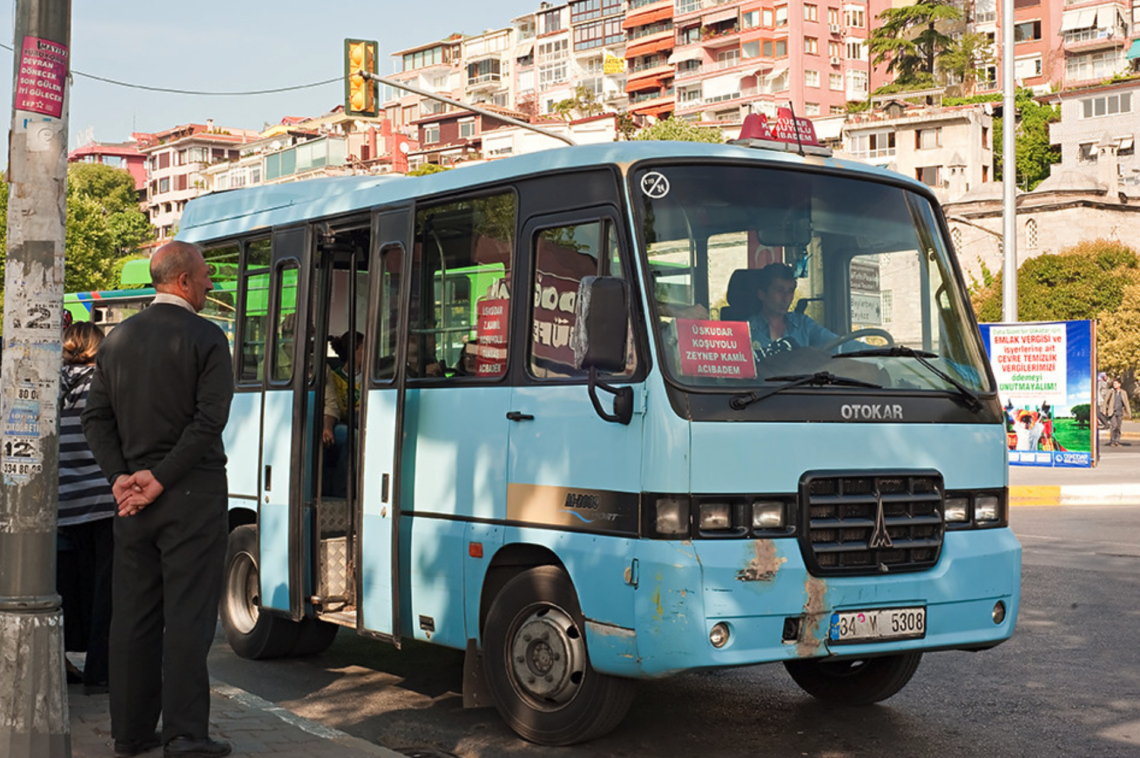
Unravelling the Turkish Dolmus
An exciting, inexpensive and sometimes convenient method of transport around Turkish towns and between Turkish villages is the dolmus (minibus). A journey on a dolmus is always an experience for one reason or another. Fancy joining me?
Errr, a Dol-what?
Dolmus (pronounced ‘dol-moosh’) are often small, white, unassuming minibuses, but in some areas (depending on how much money the driver made last year) they come in all sorts of colours and designs. They often have their destination written across the front, or on a small board in the window. Some have bitterly cold air-conditioning. Some have none and windows that don’t open. It’s a bit like a lucky dip.
What does Dolmus mean?
Good question! The word dolmus is the Turkish word for ‘stuffed’. Laughing aside, be prepared to be stuffed in, uncomfortably close to your sweaty neighbour and maybe even a few farm animals, depending what the locals are up to. Incidentally, in remote areas if sitting next to a stranger, especially at some proximity, it is better you sit next to someone of the same sex. The buses have no precise timetable, but tend to leave when they have enough passengers. The good news is that when they are busy there is a more frequent service. The bad news is that you will have less space. But space is overrated, right?
Where do you catch a dolmus?
Dolmus follow certain routes through towns and normally along the main roads between villages. They stop whenever and wherever they see a customer. So if you stand by the roadside, somewhere that is safe for the dolmus to stop, then when you see a dolmus approaching wave at the driver. As long as he has room for you onboard, he will stop. I have jumped out of my skin when dolmus drivers beeped their horn at me (innocent pedestrian) hoping to collect some extras and I have also seen them stop in ridiculous places, so beware of them. Also remember, the frequent stops can mean your journey may take a while.
How do I buy a ticket?
There are no tickets for dolmus; you just pay the driver. Often there are small signs displayed inside indicating how much you need to pay, but if you’re not sure you can ask “ne kadar?” If you are at the back of a stuffed dolmus and are more likely to grow roots than get near the driver, just hand your fare to someone forward of you and your fellow passengers will pass it forward to the driver, who will often count it and give you change while driving along sheer drop mountain roods – eek! Remember this if a stranger on a dolmus gives you a handful of small change; you are expected to pass it forward.
Help! – How do I get off?
So you’re sitting back, checking out the scenery and watching a goat chew on a fellow passenger’s shirt, while your destination is fast approaching. How do you tell the driver that you need to get off? In tourist areas the drivers usually understand English, so if you shout out “Stop please” that will often do. If you are somewhere remote you may want to learn the phrase “inecek var” (pronounced ‘een-ey-jeck vaar’)
A trip to Turkey isn’t complete without a journey on a dolmus. Consider it a cultural experience. Have you used confusing public transport overseas? How did you go?
Photo credit: Viajante





5 Comments
Lisa @chickybus
Cool post! I have experience with these and they’re fun (some are like small chicken buses)–although the change thing can get a bit complicated. Best to sit way up front or in the back, I think.
My recent post Me, Weight Watchers and Ramadan—a Perfect Storm
Steve
Those look like so much fun to ride in. It definitely would be a fun, unique cultural experience. I’ll have to try it when I get there. I was confused by the bus system in Thailand, but it was mostly the buses within the Bangkok city limit. Taking one between cities wasn’t as bad.
Liv
@Lisa Yes the paying & change thing can get very complicated, but somehow it seems to work!
@Steve Are you going to Turkey? You’ll love it!
My recent post Expat Life – The Good, The Bad and The Ugly
linda
The trams in the Netherlands are exotic for all of two trips, then it’s just a convenient way to get around. Your story of dolmuses (dolmi?) is fun; reminds me of a couple bus trips I took in Mexico many years ago. Sheer drops on mountainside curves, the occasional goat or chicken on the local buses, etc. Still, it works, and it’s great to have another perspective.
Liv
Bus trips are one of the methods of transport that can change wildly from one country to another. It’s fun isn’t it? As for the plural of dolmus, in Turkish it is entirely different, so I often just say ‘dolmus’ for singular and plural, but i have heard ‘dolmuses’ too!
My recent post London’s Burning